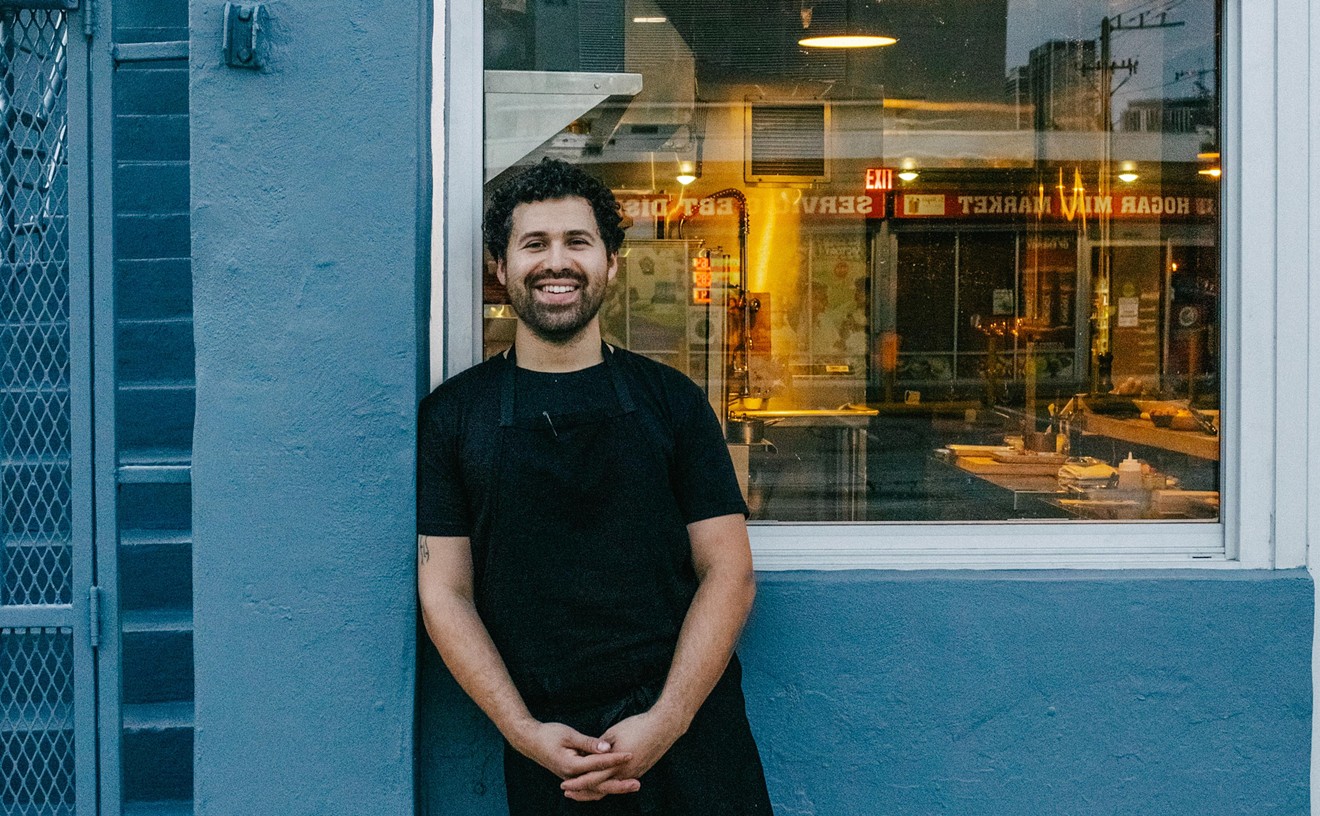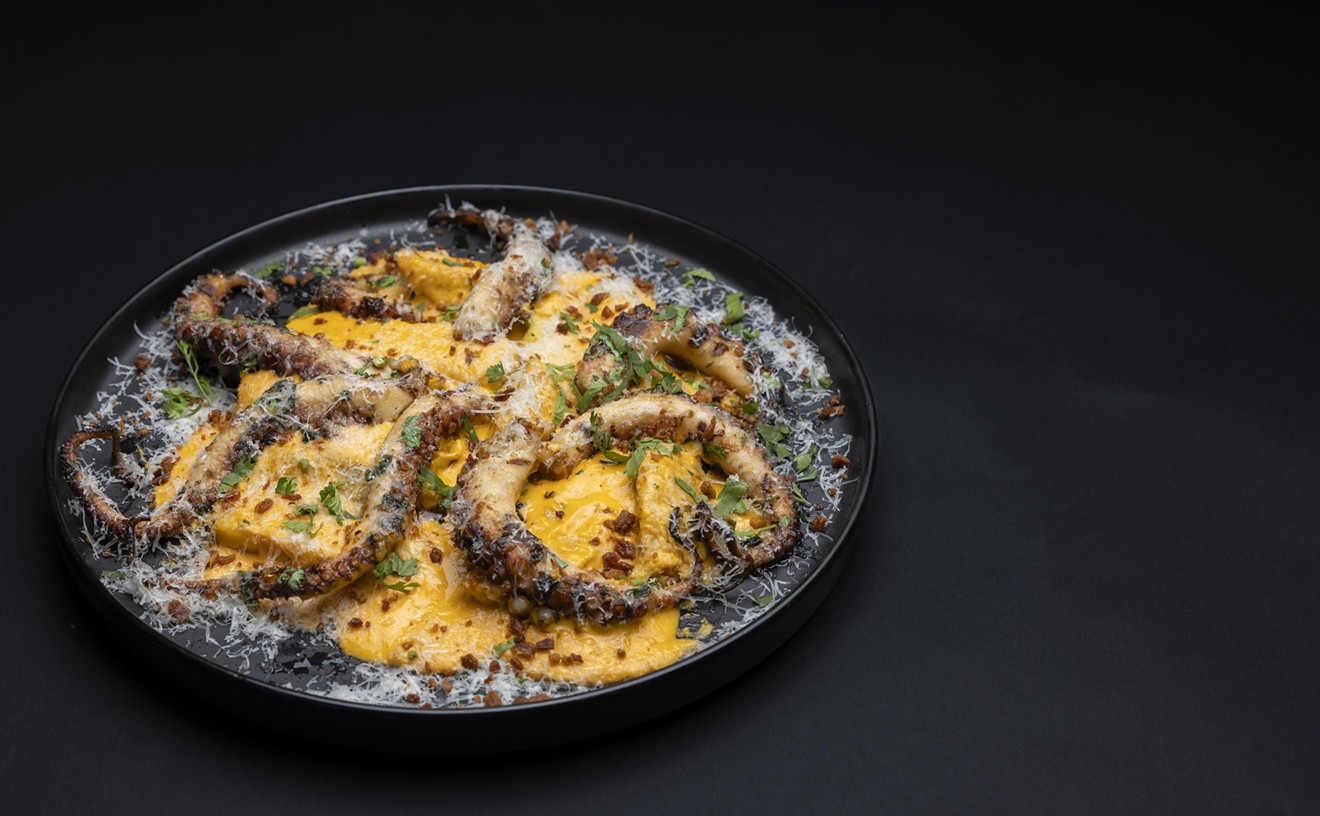I was a young man, alone, in Amsterdam. The third item on my to-do list, after visiting the Heineken brewery and Anne Frank's house, was to partake of a rijsttafel. I knew nothing about food back then, but the tourist guides insisted that sampling this Dutch-Indonesian specialty was a must. So after ambling into one of many restaurants that promoted the dish, I was seated at an unusually large table for one. Then the parade of food began: Rice accompanied by nuts, seeds, pickles, spring rolls, sambals, satays, eggs, meats, fish, fruits, vegetables — until there was little tablecloth showing (guess that's why the word rijsttafel translates to "rice table"). From that day on, cuisine became a passion of mine.
Actually that last part isn't exactly true — it would be years before I'd cultivate any culinary interests. But who knows what influence the joy I experienced that day had on my decision, made later in life, to become a chef? All I know is that I haven't had a real rijsttafel since. Which brings us to Indomania, a new Dutch-Indonesian restaurant off Collins Avenue on 26th Street in Miami Beach. Dutch couple Pieter and Ineke Both own and operate the stylish, streamlined establishment. He welcomes guests, pours drinks at the compact bar, and helps out with the front of the house; she cooks the food. There are only a dozen or so tables, many of which line up against charcoal banquette seating that occupies the left side of the space. Pale gray and white walls are adorned with batik cloths and a blown-up black-and-white photo of a cute little Indonesian girl slurping noodles.
Rijsttafel is thought by many to be an Indonesian dish, but it's really a Dutch colonial adaptation of a similar Sumatran meal (although nowadays Indonesian tourist restaurants have adopted the adaptation). Indomania's rijsttafel should probably be called a rijsplattel: All of the components, anchored by a mound of steamy rice, come crammed onto a single plate: ayam opor (chicken braised with coconut milk); grilled, skewered chicken sateh (satay); crisp green beans, pickled cucumbers, and a hard-boiled egg splashed in curry sauce; and, best of the lot, daging semur, softly braised chunks of beef in a dark, sweet kecap manis sauce. Krupuk, a fried shrimp cracker the size of a large tortilla, stands upright from the pile like a satellite dish.
The Boths shrewdly include a vegetarian rijsttafel, which substitutes a few added veggies and sateh tempeh for the meats. Condiments for either rendition are a toss of toasted coconut shreds and peanuts (to sprinkle over the rice); spicy garlic-chili sauce (like what you can buy in a bottle); and thick, syrupy palm-sugar-based kecap manis, which has a soy-molasses taste.
Diners are started with a dish of little fried melinjo (or belinjo) chips, made from pounded nuts of the same name, with slightly piquant peanut sauce for dipping. We ordered a couple of sateh appetizers to follow: three skewers of tender lamb and the same number of skewered "prawns" — in actuality four smallish shrimp flavored big with garlic. A trio of cleanly fried spring rolls (lumpia) crackled with crystalline skins wrapped around cabbage, carrots, and scallions, but the biggest hit at our table was fricadel jagung, flat, flavorful corn fritters freckled with red peppers, scallions, and cilantro. An accompanying "chili-lime" dip looked and tasted the same as the chili sauce alongside the rijsttafel.
Nasi goreng is another rice-based, multi-ingredient affair, but the steamed grains get stir-fried with onions, meat (in this case petite cubes of fried pork), and more of that dark, sweet kecap manis. Again, Indomania puts all on a single plate, including a skewer of grilled chicken with peanut sauce (sateh ayam), fried egg, barely pickled cucumber, and another big, garlicky rice cracker.
There is a laid-back atmosphere here, which lends a relaxing element to the dining. On the other hand, there aren't enough waiters working the room, so service is slow — and often discombobulated. The kitchen operates at a snail's pace, too, and food is cooked fresh to order (which I'm not complaining about). There is plenty of hang time. This is true regardless of what you order, but if you plan on indulging in the duck entrée, I suggest bringing along a book. "It's worth the wait," Pieter promised each time he passed our barren table. He was sure right about that. The duck breast, lightly grilled, wrapped in banana leaves, and finished off in the oven, yielded meltingly soft meat imbued with ginger, galanga, scallion, cilantro, lime leaves, palm sugar, and Balinese spices. A snapper fillet likewise gets herbed, spiced, and steamed in banana leaves, with nearly as riveting a result.
Indomania's menu is extremely concise (I've alluded to practically every item on it). The restaurant opened in February, so it is still in its infancy. Let's hope that in due time the number of offerings will grow — and that the baby prices will not: Appetizers run $5 to $9, main courses $14 to $20, rijsttafel $18, desserts $5 to $7.
I'm not a fan of final courses fished from a fryer, but those who don't mind the concept will probably enjoy fried bananas (pisang goreng) — and if not, a scoop of coconut ice cream that comes with it should provide cooling consolation. I can't imagine anyone not relishing the fresh, tart, creamy lemon pie, buttressed by the most buttery of crusts and contrasted with sparkling mango sorbet. Key lime and litchi sorbet are also available, either à la mode or à la carte. That's it for desserts.
Indomania's food and service are not going to knock anyone out of their wooden shoes. Nor is the short, pedestrian wine list (beer goes better anyway). Just the same, this attractive little neighborhood restaurant projects a fetching, quirky personality. Dinner here is like eating at the home of a lovable but absent-minded relative with a knack for good cooking — the orchestration might be shaky, but the hospitality and fare will be fine, and a good time will be had by all.
The bad news: It is becoming increasingly clear I'll have to return to Amsterdam if I hope to ever experience another real rijsttafel.










